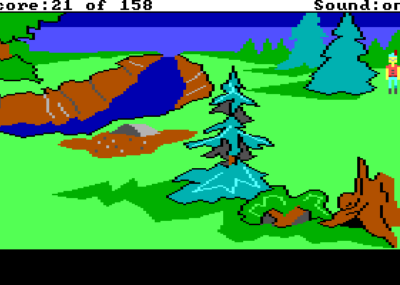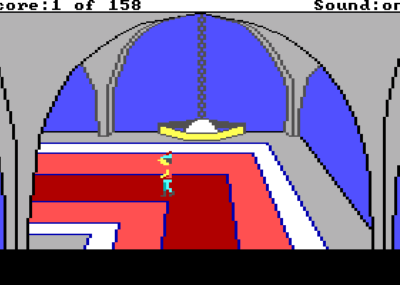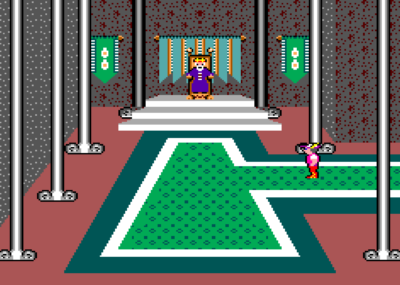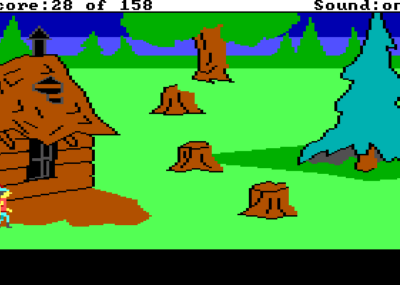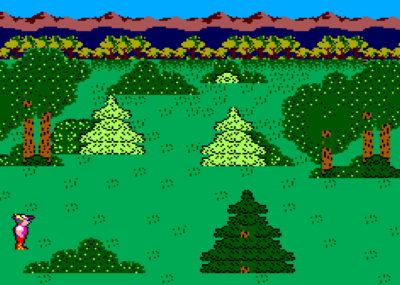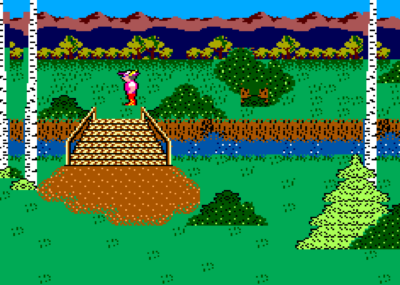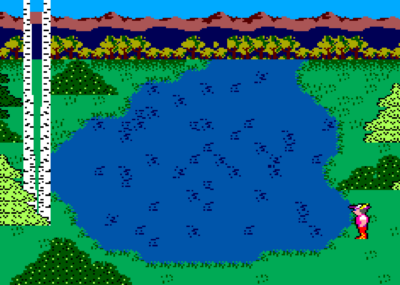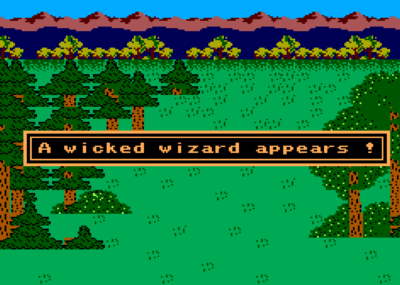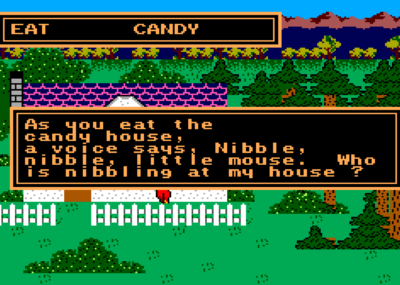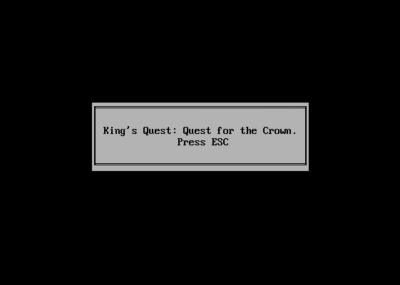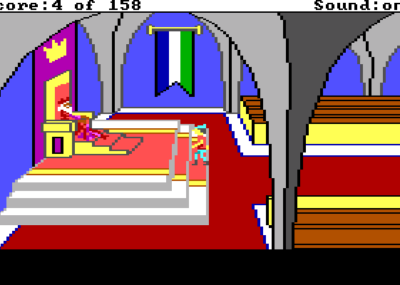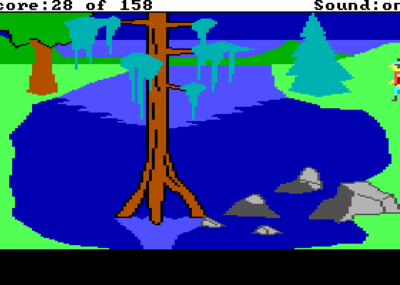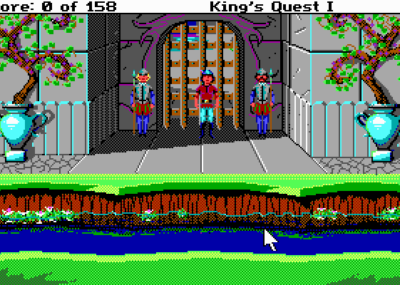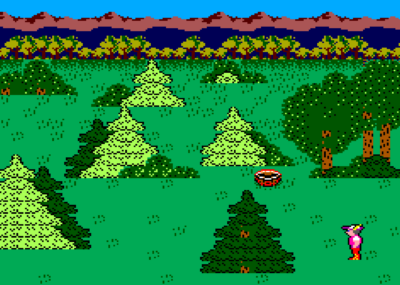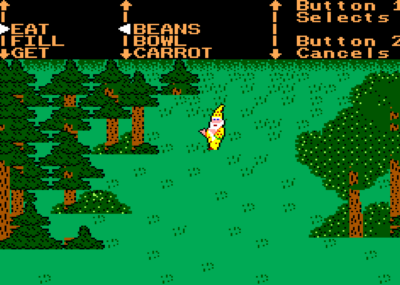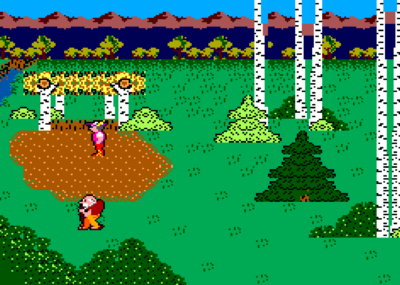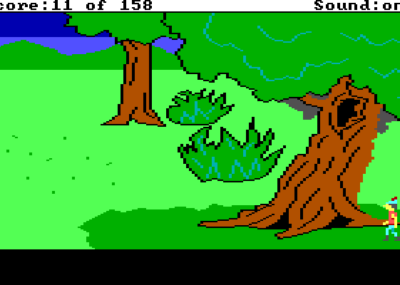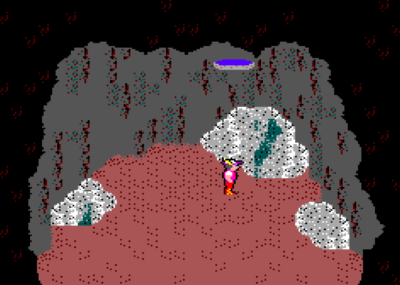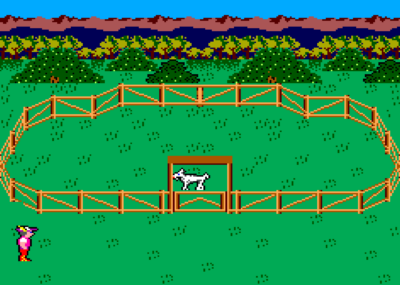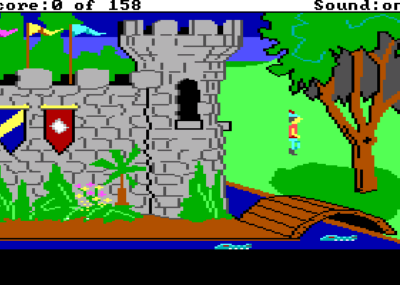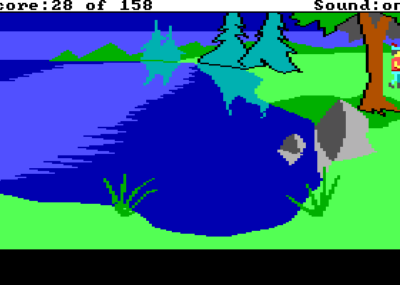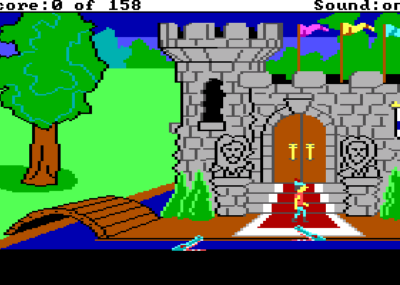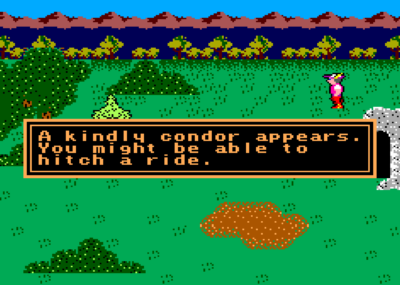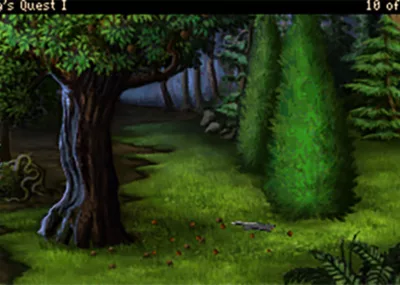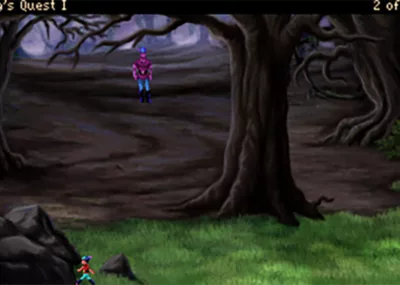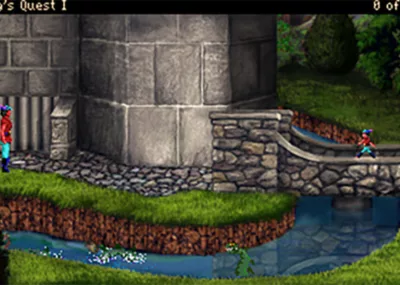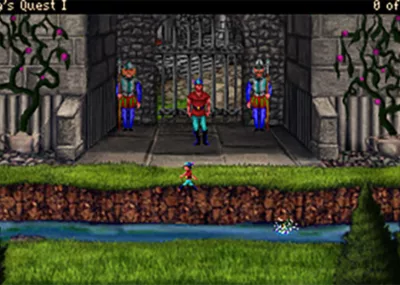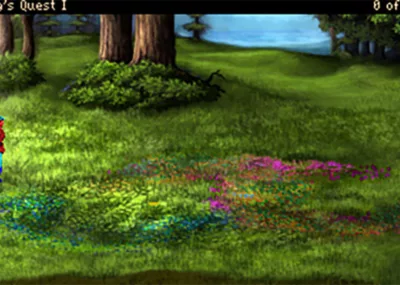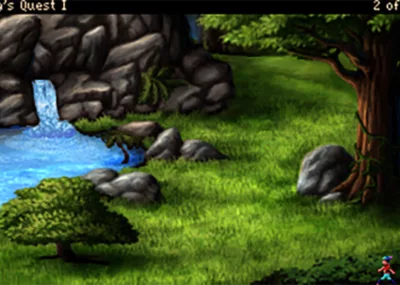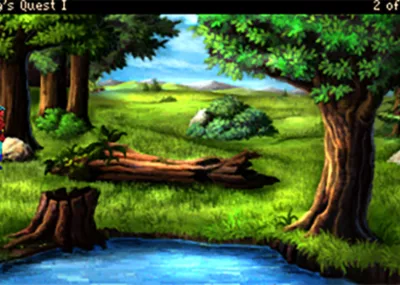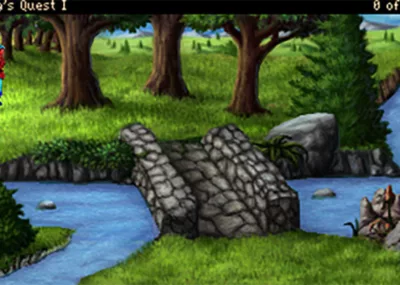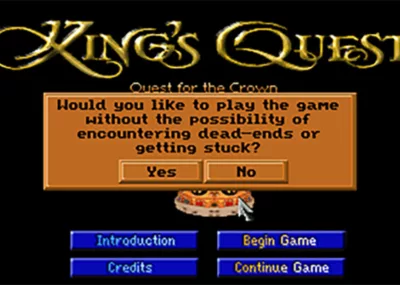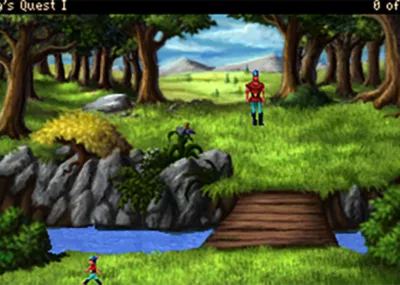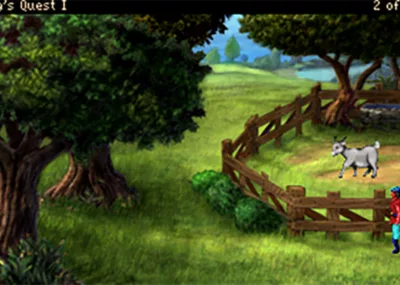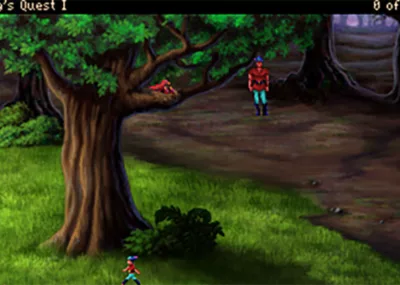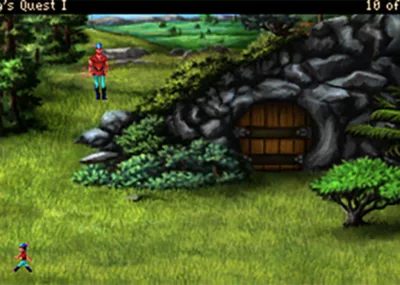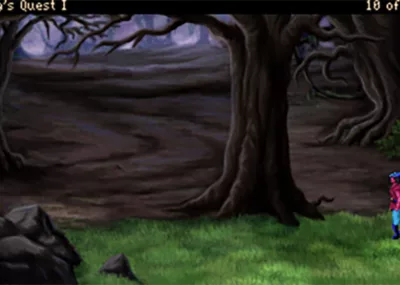King's Quest
Quest for the Crown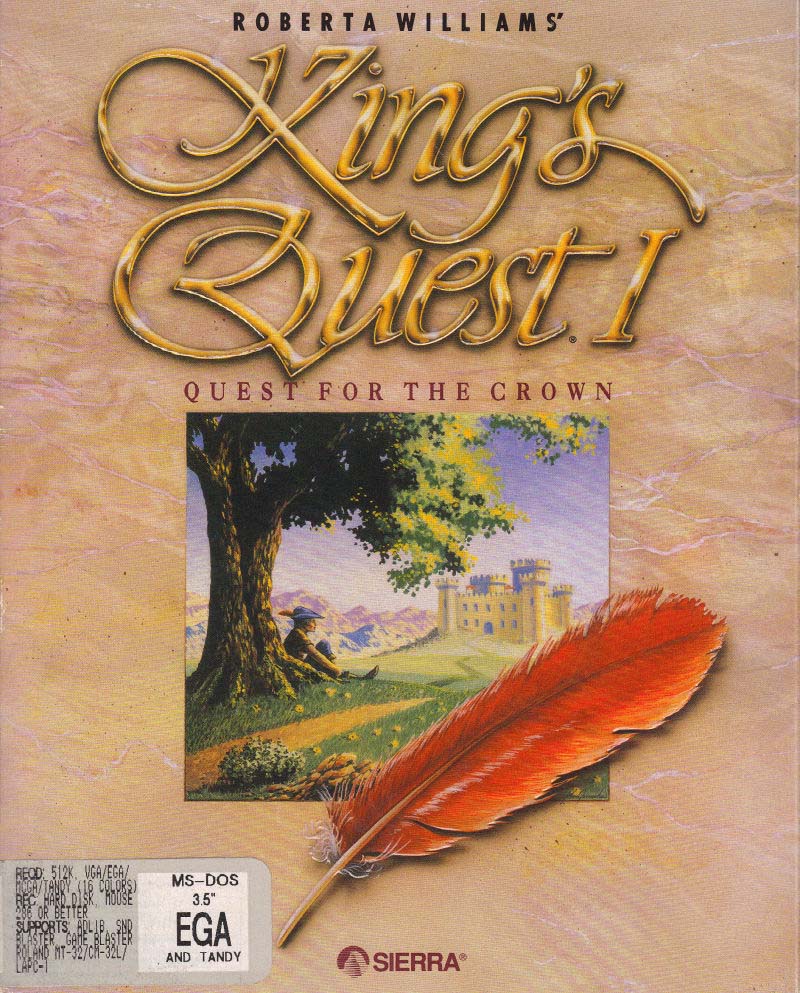
Menu
Developer: Sierra On-Line / Microsmiths
Publisher: Sierra On-Line / Activision
Release Date: 1984
Platforms:
- IBM PCjr
- Tandy PCs
- Apple II
- Sega Master System
King’s Quest was released in 1984, and the adventure game industry was forever changed. This may seem like an incredibly far-reaching claim, but you need to remember that prior to King’s Quest, there had not been an adventure game with a protagonist the players could move around the screen and interact with objects. Prior to this, adventure games were text adventures or text adventures with graphics. In fact, the first five games created by Roberta Williams for On-Line Systems were exactly that: text adventures with graphics. In fact, Mystery House, released in 1980, was the first adventure game to use graphics. Note: it was definitely not the first game to use graphics, but the first in the adventure genre which had previously used text as a means of conveying the narrative.
In King’s Quest, the old King Edward sets his knight Graham on a quest to find three objects to restore the kingdom to its former glory: a magic mirror, a magic shield, and a magical chest always brimming with gold. And the player can perform these tasks in different ways, which while not new (though relatively uncommon) to text adventures, was new to graphical adventure games.
In the original PCjr version of the game, the interface was still new and not very streamlined. Players had to go to the inventory screen to see their score, and the text from the game was shown on the small text area near the cursor where the player entered their commands. This interface would be significantly updated in the next release of their AGI engine as they released new versions of King’s Quest and future Quest games in other genres such as Space Quest and Police Quest.
King’s Quest also made its way to game consoles with a release on the Sega Master System. The game was rebuilt from the ground up for the console using bitmapped graphics rather than filled shapes, and the most interesting change was shifting to a two-button controller for text input during gameplay.
Original AGI Releases
The original release of King’s Quest in 1984 specifically targeted the IBM PCjr, but it was not exclusively licensed to the PCjr. So Sierra began porting it to other systems and optimizing and updating it with each release and extension of the AGI toolset and the target system’s graphical power.
SCI Releases
In 1990, Sierra released the remake of King’s Quest I using their newest, shiniest engine, the Sierra Creative Interpreter. Sales were slow and, unfortunately, many fans of the original were unhappy with the new game. They felt that the use of the mouse interface, even with the keyboard input sill in full effect for this version, made the game too easy.
Sega Master System Release
In 1989, Milton Bradley licensed King’s Quest to release a version on the Sega Master System. They contracted a new development team to not only port it, but completely re-create the game using the tiled graphics available on the console. They designed a semi-intuitive input intterface that used the controller to navigate menus to perform actions.
AGDI Remake Release
AGD Interactive created a VGA remake of King’s Quest I, which was largely similar to the original game. They would take more liberties with the second game, but for this one, they mainly wanted to update the graphics and cull out dead-ends.
Links
PushingUpRoses
King’s Quest on the Master System
Space Quest Historian
King’s Quest: A Fair and Balanced Retrospective
Another Podcast About Games
Episode 1 – King’s Quest
Unfriendly Locals in Your Area!
King’s Quest I – Episode 3
The Graphic Adventurers
Episode 1 – King’s Quest: Quest for the Crown

